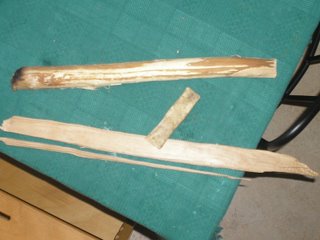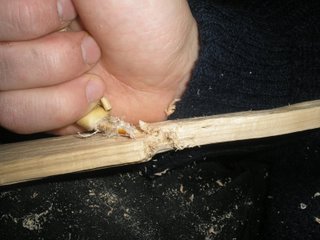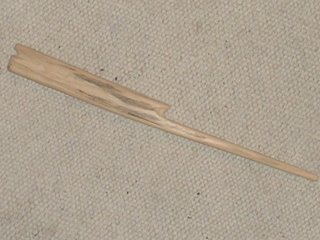Continuing where I left you on the previous update. After the blank was pretty uniform I split of some excess wood from one side. Splitting is by far the quickest way of removing material, but if done recklessly it can ruin the whole piece.

A way of control the splitting is to carve a notch in the end where you want the split to end and split out a piece, carve a new notch and repeat the process until you are pretty close to the desirable dimensions. It is slow, but a lot faster than carving or grinding it all down.

When carving a notch a strong edge is preferable, but beaver teeth isn't sharp enough to be as efficient as flint when planing or scraping a surface.

The notch in the front, where the string will be winded up on are cut with the beaver teeth. The other side I carved half way through, then abraded a little more with a rock and broke off in a quite controlled fashion. After cleaning up, the other end had a notch cut in as well.

The edges are rounded with a flint flake and the whole thing is abraded to a more even result.

The only remaining woodworking task remaining now is to drill a hole to tie the thread through. All else is antlerworks and lashing.